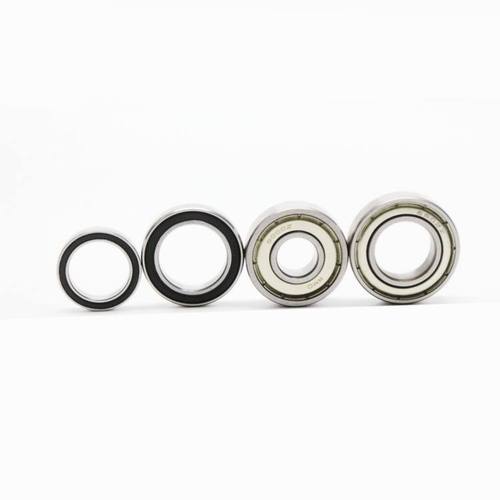The Ultimate Guide to Buying Miniature Bearings for Surgical Robots: 5 Key Factors You Must Know
Miniature bearings play a critical role in surgical robot performance, requiring exceptional precision and reliability. These components enable smooth articulation in robotic arms and endoscopic tools, directly impacting surgical accuracy. When purchasing bearings for medical robotics, engineers must consider material biocompatibility, micron-level tolerances, and sterilization compatibility to meet stringent healthcare standards.
Table of Contents
1. high precision miniature bearings for surgical robots2. best suppliers of surgical robot bearings
3. miniature bearing specifications for medical devices
4. how to choose bearings for surgical robots
5. cost of miniature bearings in surgical robotics
1. High Precision Miniature Bearings for Surgical Robots

Precision engineering defines success in surgical bearing applications. Medical-grade miniature bearings typically require ABEC 7 or higher ratings, with radial runouts below 0.0005 inches. Advanced manufacturers employ vacuum-degassed steel alloys and ceramic hybrid designs to achieve friction coefficients under 0.001. These bearings must maintain performance through repeated autoclave sterilization cycles while resisting biological contamination. Leading OEMs specify custom preload settings and specialized lubricants that withstand gamma radiation sterilization without degradation. Recent FDA guidelines now mandate traceability documentation for all bearing components used in Class II medical devices, adding new compliance layers to procurement processes.
2. Best Suppliers of Surgical Robot Bearings
Identifying qualified suppliers requires evaluating ISO 13485 certification and medical device manufacturing experience. Top-tier vendors offer cleanroom assembly facilities with particle count controls below ISO Class 5 standards. Technical capabilities should include custom bore polishing to Ra 0.05μm finishes and ability to handle FDA-submitted material certifications. Leading European manufacturers now provide REACH-compliant stainless steel variants, while Japanese suppliers excel in ultra-high-speed bearing designs for robotic drill applications. Always verify supplier track records in actual surgical robot implementations through client references and case studies.
3. Miniature Bearing Specifications for Medical Devices
Critical specifications include dynamic load ratings exceeding 200N for prolonged operation, torque consistency within ±5% across temperature fluctuations, and corrosion resistance to surgical disinfectants. FDA-compliant materials like 440C stainless steel with titanium nitride coatings have become industry standards. Advanced designs incorporate non-magnetic properties for MRI compatibility and integrated sensors for real-time wear monitoring. Engineers should specify vacuum impregnation sealing for fluid resistance and demand complete material disclosure certificates meeting EU MDR 2017/745 requirements.
4. How to Choose Bearings for Surgical Robots
Selection begins with analyzing motion profiles - continuous rotation joints demand different bearing solutions than limited-arc oscillating mechanisms. Consider hybrid ceramic bearings for electrosurgical tools requiring electrical isolation. For force-sensitive applications like robotic suturing, prioritize bearings with controlled elastic deformation characteristics. Lubrication selection proves crucial: perfluoropolyether-based greases outperform traditional options in high-temperature sterilization environments. Always conduct accelerated life testing under simulated surgical conditions, including exposure to blood plasma analogs and repeated sterilization cycles.
5. Cost of Miniature Bearings in Surgical Robotics
While medical-grade bearings command 3-5x premium over industrial equivalents, total cost analysis must consider lifecycle factors. Premium bearings reducing replacement frequency by 40% can lower long-term maintenance costs significantly. Bulk purchasing contracts with sliding scale pricing often apply for orders exceeding 10,000 units. Emerging additive manufacturing techniques now enable cost-effective custom geometries without traditional tooling expenses. However, buyers should budget for mandatory biocompatibility testing (ISO 10993) and sterilization validation protocols when introducing new bearing solutions.
Understanding these five critical aspects - from micron-level precision requirements to lifecycle cost calculations - empowers surgical robot manufacturers to make informed bearing decisions. Each factor interconnects to influence device reliability, regulatory compliance, and ultimately patient outcomes. The following sections provide detailed technical insights to guide your procurement strategy, whether you're upgrading existing systems or developing next-generation surgical platforms. Discover how material science advancements and precision manufacturing innovations are redefining possibilities in medical robotics.
Selecting optimal miniature bearings for surgical robots requires balancing technical specifications, regulatory compliance, and operational economics. This guide has detailed essential considerations from precision engineering standards to supplier evaluation criteria. By prioritizing certified medical-grade components and partnering with experienced manufacturers, engineers can ensure reliable performance in critical healthcare applications while maintaining cost efficiency throughout the product lifecycle.




 13869596835
13869596835